Particle size specification for process chemicals is an important quality control measure for the semiconductor industry. Cutting-edge microelectronics producers need ultra-clean process chemicals thoroughly monitored for contamination and filtered to a particle size of 20 nm or less.
Particle Measuring Systems (PMS) provides Chem 20™, the world’s most sensitive particle sensor, enabling online particle specification down to 20 nm for the first time.
When paired with Chem 20, the SLS-20 syringe sampler enables offline batch sampling for a wide range of applications, including process chemical research, manufacturing, distribution, and packaging.
This article introduces the SLS-20 syringe sampler and outlines its characteristics, advantages, sampling requirements, and procedures for 20 nm batch sampling with Chem 20.
Application testing of a range of typical process chemicals shows the SLS-20 and Chem 20 system’s data stability, reproducibility, and sampling flexibility. The user-friendly SamplerSight program further improves quality assurance by offering a simpler method for viewing, reporting, and analyzing data and trends.
Introduction
Semiconductor chemical manufacturers face increasingly stringent particle contamination limit requirements. Proactive particle contamination control at a sensitivity of 30 nm is insufficient for today’s process technology, which operates at much smaller sizes.
To address this issue, Particle Measuring Systems introduces Chem 20 chemical particle counter, which integrates online 20 nm particle specification control into existing practices. As the world’s only 20 nm particle counter, reducing sensitivity below 30 nm necessitated a considerable increase in signal detection capabilities.
Chem 20’s enhanced sensitivity is demonstrated by detecting events missed by particle counters with a resolution of 30 nm or higher, resulting in significant quality improvements in liquid systems.
The newly designed SLS-20 syringe sampler, along with Chem 20 particle counter, enables offline batch sampling for process chemicals’ research, manufacturing, distribution, and packaging. The SLS-20 is ideal for precise, small-volume sampling and has demonstrated outstanding data stability and repeatability through extensive testing of a wide range of chemicals in several applications.
Figure 1 depicts the system setup for batch sampling applications. The sample container could be a bottle, drum, or tote.
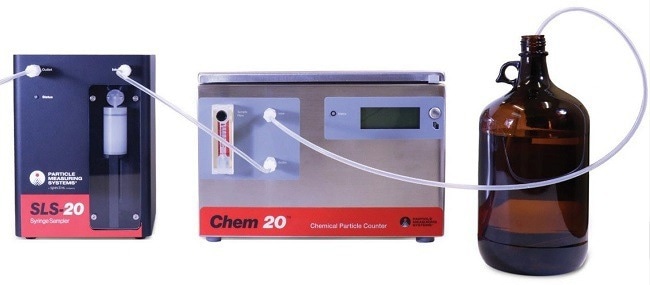
Figure 1. SLS-20 and Chem 20 syringe liquid sampler system for batch sampling applications. Image Credit: Particle Measuring Systems
Features
The SLS-20's chemical batch sampling allows for testing samples lot by lot. Only a small quantity of chemical samples is necessary to generate useful data, which reduces overall chemical usage within the quality system and waste treatment expenses.
The SLS-20’s stand-alone architecture allows continuous monitoring using either the sampler technique (SLS-20 and Chem 20 combined) or the online approach (Chem 20 alone).
Overcoming Background Scatter
Depending on the intensity of background fluid scattering, the SLS-20 and Chem 20 system may be operated in either Regular or High Scatter Mode. When chemical background scatter is assumed to be negligible, Regular Mode provides the maximum sensitivity for counting particles.
As chemical background scatter increases, the background molecular scattering becomes too high for the detector to distinguish individual particles. When this happens, it is essential to enable High Scatter Mode to reduce the chemical’s molecular scattering.
Figure 2 depicts how the scatter mode is switched using SamplerSight software. High Scatter Mode offers enhanced detection for a wide range of difficult-to-monitor chemicals. Adjusting the mode enables the most particles to be observed with the least noise.
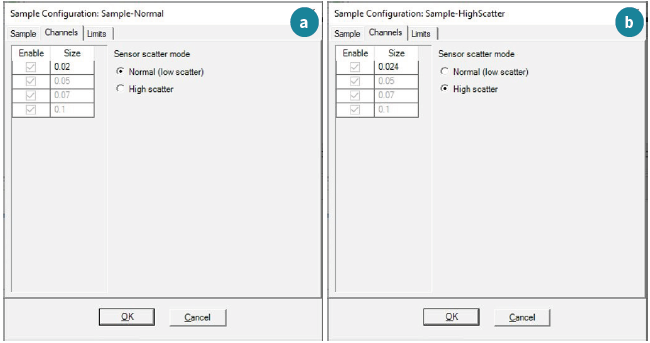
Figure 2. Switching between (a) Normal Mode and (b) High Scatter Mode with SamplerSight software. Image Credit: Particle Measuring Systems
Laser Safety
The new SLS-20 sampler is fitted with a laser shutter. When the syringe drains waste chemicals, the shutter closes automatically, allowing the laser to operate normally. The laser shutter also closes when:
- The system is not sampling, such as during system idling
- The bubble detector detects bubbles
- The flow sensor is activated
These constraints on when the laser can be utilized guarantee higher protection for the equipment.
Sensing Bubbles in Sample Flow
A bubble detector added to the sample cell’s inlet side prevents undesired reflections from bubbles larger than 4 µL (2 mm in diameter). It passes a sample tube between a light emitter and a photodiode.
When a bubble travels through the tube inside the flow, it scatters light, causing the photodiode to receive less light than expected. This triggers a bubble alarm.
The laser shutter is closed to avoid possible laser scattering caused by bubbles flowing through the sample cell. The shutter will reopen when the bubble alarm signal is no longer present.
Handling a Reduction in Sample Flow
Some chemicals can heat up under laser light and potentially volatilize when there is little or no sample flow, damaging the sensor.
Chem 20 identifies this low-flow condition using an integrated Teflon flow switch. When the switch is pressed, the laser shutter closes, preventing the laser from illuminating the stagnant chemical. The system automatically resumes operation when the flow returns to normal, roughly 35 ml/min.
Leak Detection
An optical leak detector monitors the leak collection plate located at the bottom of Chem 20 unit. If a leak is discovered, the sensor laser is instantly turned off, system activity is paused, and the LCD indicator reads “LEAK INDICATED, Reset to Clear”.
This state will persist until the leak is repaired, the leak plate is dried, and the unit is turned off and reset.
When the numerous benefits of flow and volume accuracy, small volume capability, smooth continuous fluid motion, and coordination of particle counting with sample flow are combined, the syringe sampler provides many excellent advantages for fluid delivery to a particle counter.
Obtaining Stable and Repeatable Data
PMS suggests the following steps for consistent and repeatable data collection:
- Proper container cleaning is required for stable and reproducible data collection. A PMS-tested “clean” container was found to become contaminated again simply by emptying and replacing the beaker with another substance. Nanoparticles are shed due to surface tension changes at the gas and/or liquid interface.
- Flushing is required to prevent bubbles when sampling the chemical from the bottle. To remove bubbles and produce reliable data, some chemicals may need to “settle” in a temperature-controlled chamber for an extended period.
- To decrease the impact of external contamination, at least 500 ml of the inspection sample should be prepared. To increase data reliability, a separate sample for flushing should be prepared. If feasible, flush the Chem 20 unit before beginning sample testing with the SLS-20.
- Recipes in the SamplerSight software enable rejecting a count equal to or greater than 1 to remove the initial sample data due to potential contamination.
Pre-Sampling Processes
Container Cleaning
PMS has developed an excellent approach for clean fluid sampling that includes the multi-stage process of rinsing, washing, chemical rinsing, and using ultrasonic energy. In most scenarios, all stages are required to attain the cleanliness level for sampling ultrapure fluid samples.
Developing a technique that allows the same target to be achieved consistently with minimum variance is critical. In a research conducted by PMS, the overflow rinse cleaning procedure allowed a container to be flushed with low count levels.
The overflow approach is suitable for large particle detections using legacy particle counters. However, while sampling 20 nm particles, the beaker sheds particles when the beaker is emptied and refilled with the sample.
Filling and shaking can create contamination that sticks to the container wall when the surface tension of the gas and/or liquid interface changes. A specific chemical cleaning technique for sample containers is required as a countermeasure. Ultrasonic detergent effectively cleans the container of nanoparticle contamination.
The container is clean enough for the 20 nm particle test after adding a small amount of surfactant and scrubbing its inner surface with a firm bristle brush, followed by 30 minutes of ultrasonic cleaning.
After cleaning, the container can be flushed with DI water to obtain a low count rate without generating more particles from the container.
Flushing
Flushing happens right before executing a sample. The goal of flushing is to fill the syringe sampler and sensor with the sample chemical. During the changeover, the laser shutter is closed to protect internal components from fluid meniscus reflection.
When flushing, it is essential to use appropriate and safe chemical handling methods and avoid mixing incompatible fluids.
If two adjacent chemical samples are incompatible or react to create a chemical precipitate, flush the system thoroughly with at least 200 ml of water or another appropriate solvent between chemical samples.
Sample Waste
The SLS-20 and Chem 20 systems have a set sample flow rate of 35 ml/min. The sample drain rate is fixed to an acceptable value that balances the syringe’s draining time and waste load. Chemicals having a high viscosity may require a slower drain rate. A suitable value for DI water is between 35 and 70 ml/min.
Switching Chemicals
PMS recommends never letting the sample cell dry out. When the cell dries, it may leave contamination and residue, resulting in false counts that must be corrected. The ideal method for switching between chemicals is to flush enough water throughout the unit between two chemicals.
To ensure safety, raise the inlet tube and flush the instrument with ambient air to remove any remaining chemicals. Then, immediately flush the residue with ultrapure water to fully clean it. The new chemical can then be safely flushed into the device for measurement.
Use Cases of Different Chemicals
The SLS-20 and Chem 20 systems have been tested to detect sample contamination as small as 20 nm in chemicals ranging from sulfuric acid to organic solvents.
The following sections provide use cases for the SLS-20 and Chem 20, or Chem 20-HI, for evaluating high refractive index chemicals to assess chemical purity at the 20 nm level.
Isolating Lot Cleanliness
The SLS-20 and Chem 20-HI systems can distinguish one lot from another based on 20 nm particle levels in sulfuric acid.
As depicted in Figure 3, the SLS-20 and Chem 20-HI systems distinguished Lot 1 from Lot 2 for various processes throughout manufacturing.
Overall, Lot 1 was 10% cleaner than Lot 2. For both lots, particle concentration at 20 nm was approximately one order of magnitude greater than at 50 nm, showing some room for quality enhancement.
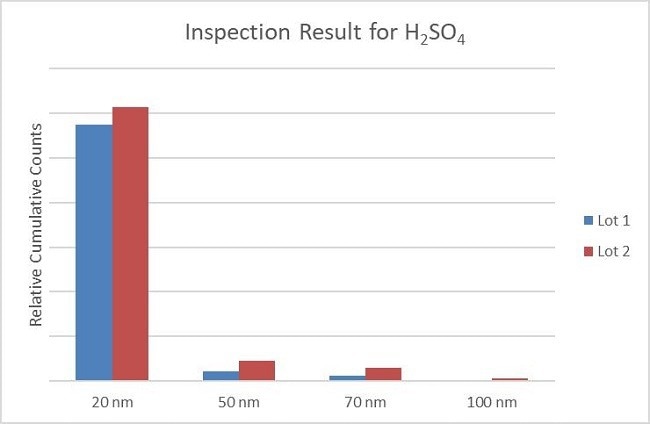
Figure 3. SLS-20 and Chem 20-HI differentiates one lot from another for sulfuric acid. Image Credit: Particle Measuring Systems
Before and After Filtration
Figure 4 depicts the test findings of propylene glycol methyl ether acetate (PGMEA), propylene glycol methyl ether (PGME), and propylene glycol ethyl ether (PGEE) solvent-based chemicals.
Under High Scatter Mode, the SLS-20 and Chem 20-HI systems detected the cleanliness of PGME, PGMEA, and PGEE samples down to 24 nm.
The filtered PGME sample was almost twice as clean as the unfiltered sample. The filtered PGMEA sample was about 20% cleaner than the unfiltered sample, whereas the filtered PGEE sample was approximately 50% cleaner than the unfiltered sample.
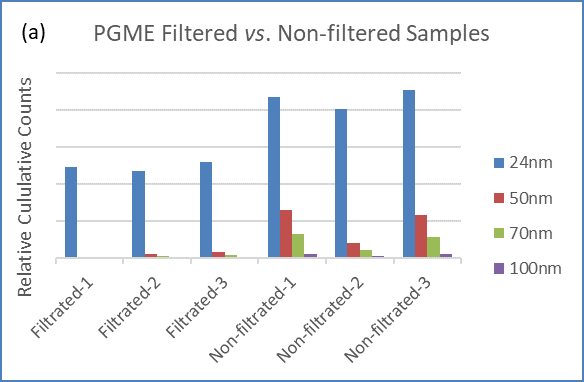
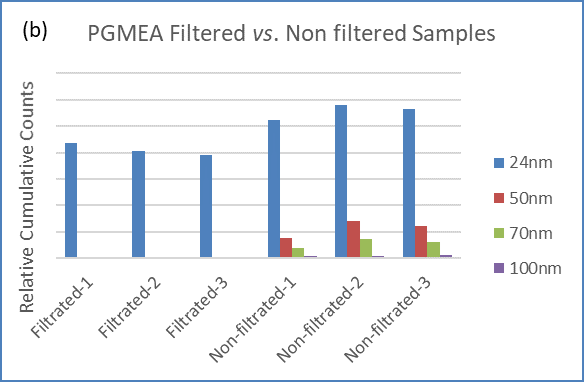
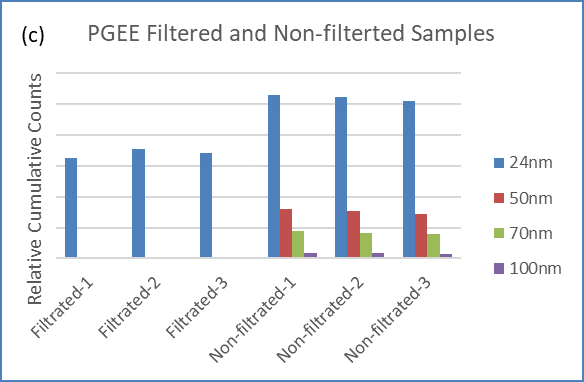
Figure 4. The SLS-20 and Chem 20-HI system differentiates pre- and post-filtrated solvents: (a) PGME, (b) PGMEA, and (c) PGEE. Image Credit: Particle Measuring Systems
Effects of Storage Time on Cyclohexanone
Long-term storage can affect particle concentration in some chemicals. While some chemicals require time for their components to fully react, others may react or alter properties when exposed to light, air, or temperature, forming unwanted particles.
The SLS-20 and Chem 20-HI systems were used to explore such influence on cyclohexanone. As demonstrated in Figure 5, a fresh cyclohexanone sample had much lower particle concentrations than an open-bottled sample. The tests also demonstrated good sample-to-sample stability.
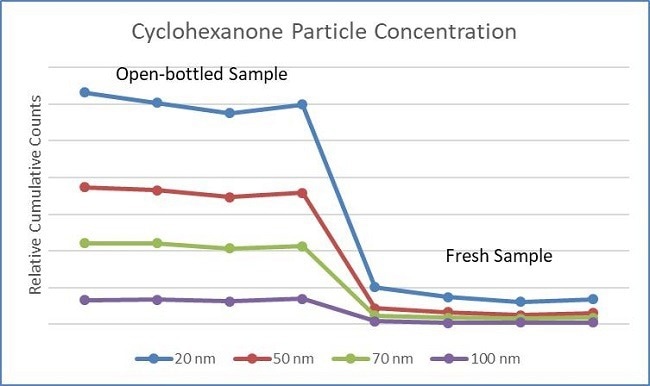
Figure 5. The SLS-20 and Chem 20-HI system differentiates a fresh sample from an open-bottled sample with long-term storage. Image Credit: Particle Measuring Systems
Blind Tests of Hydrochloric Acid Samples
The blind test is an intriguing and challenging method for evaluating the performance of the SLS-20 and Chem 20 systems. Four equal-composition hydrochloric acid samples were run through the system using various processes.
As shown in Figure 6, the system determined the cleanliness of the supplied samples down to 24 nm using High Scatter Mode. Sample A had the greatest particle concentration, followed by Samples B and D, while Sample C had the lowest. PMS was informed that the particle trend results were as predicted.
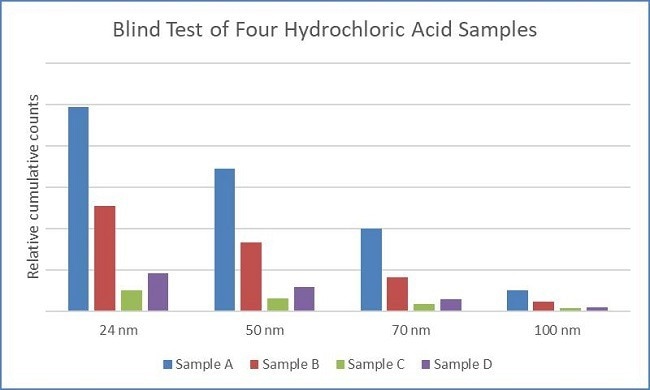
Figure 6. The SLS-20 and Chem 20-HI system identified sample cleanliness from blind tests. Image Credit: Particle Measuring Systems
Distinguishing Good Lots from the Bad for Ammonia Hydroxide
The SLS-20 and Chem 20 systems have a low refractive index, making them ideal for particle ammonia hydroxide testing. As depicted in Figure 7, the system could easily distinguish between “good” and “bad” lots down to 20 nm. The data also showed the relative particle levels of the two “good” lots.
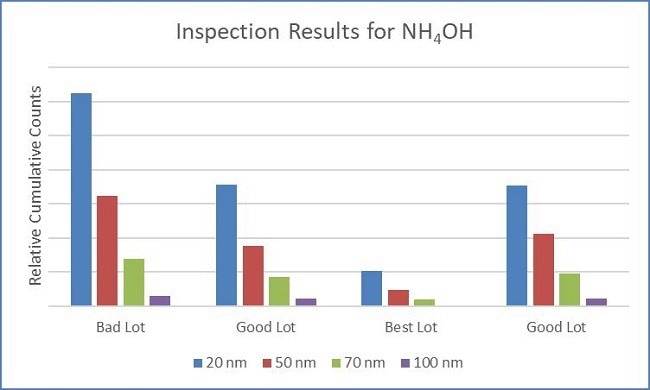
Figure 7. The SLS-20 and Chem 20 differentiated “good” lots from “bad” lots for NH4 OH. Image Credit: Particle Measuring Systems
Identifying Cleanliness of Hydrofluoric Acid
The SLS-20 and Chem 20 were used to determine the cleanliness of hydrofluoric acid. Blind tests were conducted on samples produced using various manufacturing procedures, resulting in varying cleanliness levels in the final product.
As seen in Figure 8, the particle concentrations of all four samples were detectable down to 20 nm.
The particle count results were consistent and repeatable. On average, Sample 3 had the lowest particle concentration, followed by Sample 1, which had approximately 10% higher particle concentration. Sample 2 showed the highest particle concentration.
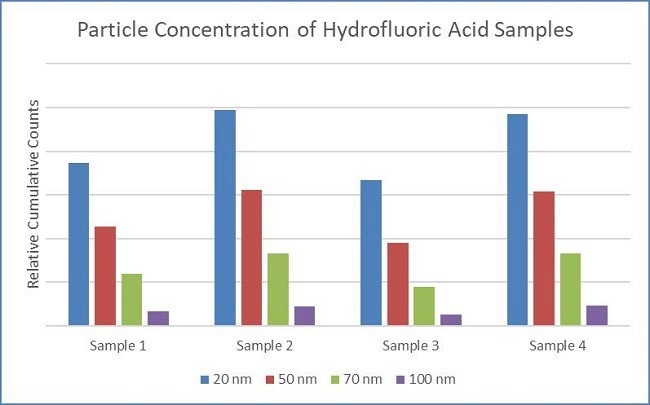
Figure 8. Consistent particle concentrations in hydrofluoric acid as measured by the SLS-20 and Chem 20 system. Image Credit: Particle Measuring Systems
Isopropyl Alcohol Tests
Because its refractive index falls between the two options, isopropyl alcohol (IPA) may be examined with the SLS-20 as well as Chem 20 or Chem 20-HI.
As shown in Figure 9, consistent and reliable data was acquired for IPA samples using both system options. The acquired data was comparable across channels of all sizes. Existing Chem 20 and Chem 20-HI particle counters may be used for IPA testing.
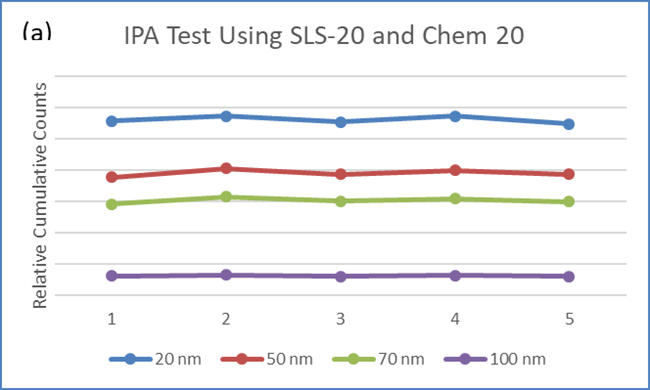
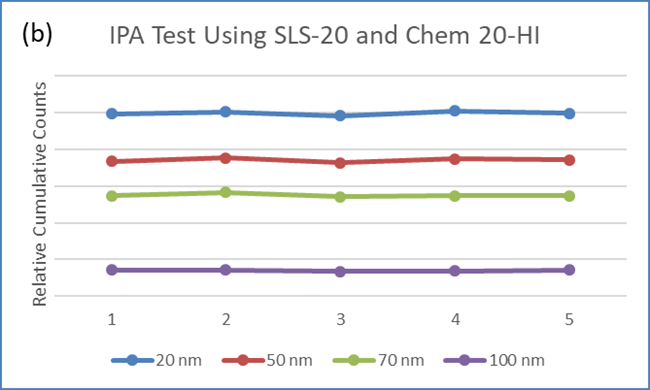
Figure 9. IPA can be tested with both system configurations. Image Credit: Particle Measuring Systems
SamplerSight Software
PMS employs Windows® 10-compatible SamplerSight software to facilitate user-friendly operation. SamplerSight program also enables straightforward communication between various facilities on a database server. Figure 10 presents a screenshot of a sample measurement performed using the software.
A complete view of the batch information, including a histogram, time plot, and tabular data, is displayed in an easy-to-use style that can be easily reported. An overview of sample-to-sample stability and reproducibility throughout operation is provided.
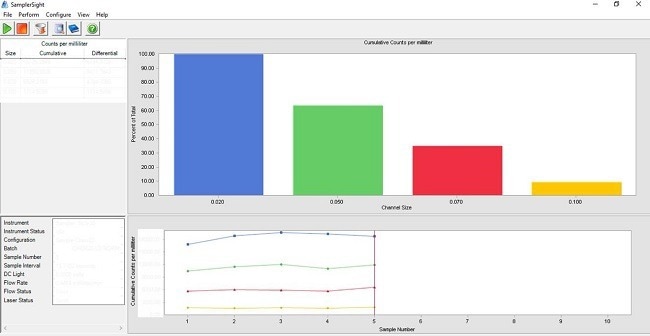
Figure 10. Screenshot of sample measurement with SamplerSight software. Image Credit: Particle Measuring Systems
Summary
The SLS-20 and Chem 20 sampling systems are capable and efficient for batch sampling of a broad range of chemicals, as shown by numerous client use cases.
This combination of Particle Measuring Systems technology is the world’s most sensitive batch sampling system. Its distinct mode-switching feature allows for the measurement of chemicals with normal and high molecular scattering.
The added features of shuttering the laser under precise settings, detecting bubbles to ensure verifiable, reproducible data collection, switching activation in case of low sample flow, and innovative leak signaling highlight significant advances made to enhance the safety and efficiency of particle measurements for process chemicals in the microelectronics sector.
The SLS-20 and Chem 20 systems and SamplerSight software provide the ideal solution for 20 nm chemical batch sampling.
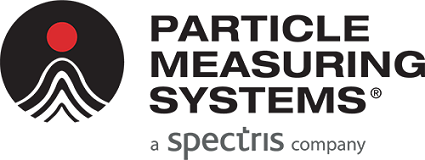
This information has been sourced, reviewed and adapted from materials provided by Particle Measuring Systems.
For more information on this source, please visit Particle Measuring Systems.